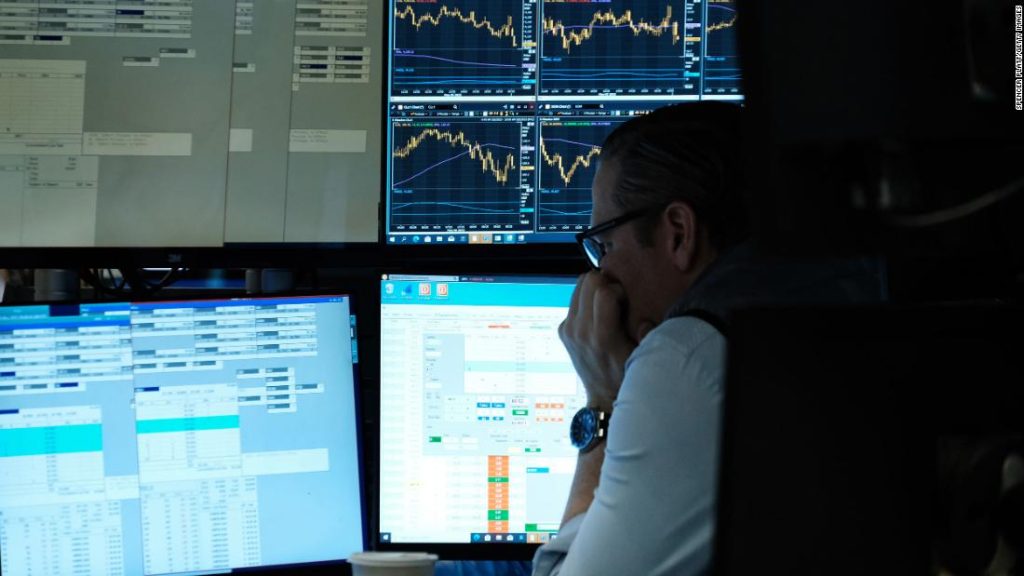Most agree that a recession could begin to take shape in the US over the next few months. The question is what form this recession will take.
Recessions and booms come in as varied shapes and sizes as the alphabet. Perhaps that is why economists have come up with letter names for different types of economic downturn.
But predicting the letter to match the situation is not as easy as ABC. This looming recession is particularly complex.
“Whether it’s about Covid in Asia or what’s happening in Ukraine or what’s happening with energy, it’s one thing after another,” said Nick Thiel, chief executive of investment bank Armory Group.
The element of this potential downturn that differs from others, Thiel said, is “the psychological impact on the workforce from Covid and the massive amount of subsidies that have been brought into the economy.” The resulting labor shortage is something we haven’t seen outside of a wartime recession.
“When you look at job prospects relative to the number of unemployed individuals, we’re definitely in uncharted territory here,” agrees David Leibovitz, global market analyst at JP Morgan Asset Management. “I’ve never really seen him like this in my life.”
But Thiel said, “The components of what’s going on are reminiscent of past recessions.”
So if we were tied to a recession, what form would that take?
U-shaped
“I think we’re going to have a U-shaped rebound, which we haven’t seen in a long time,” Till said.
A U-shaped recession indicates a sharp decline, with a long struggle at the bottom before recovery. These are painful recessions that last for a year or two and are caused by a number of concurrent factors. Stagflation, the oil crisis, and the Fed’s choppy response from 1973-1975 led to a prolonged U-shaped recovery.
Simon Johnson, a former chief economist at the International Monetary Fund, compared this kind of recession to being stuck in a bathtub. He said, “You get in. You stay inside. The sides are slippery. You know, maybe there’s some bumpy stuff on the bottom, but you don’t get out of the bathtub for long.”
Thiel said the economy will need to slow down for a while before the workforce and unemployment return to a normal level. When it finally does, things will return to normal, but it may take a few years.
V-shaped.
A V-shaped recession is exactly what it sounds like: a sharp drop with a clear bottom and then a steep slope. This kind of quick and complete recovery is the best case scenario when it comes to a recession. Sometimes falling into a slump is more steep than climbing back into recovery, like a Nike swoosh.
These usually represent a recovery from a recession based on one-time shocks, such as the two-month COVID-19 recession.
Leibovitz hopes that if there is a recession, it will be V-shaped and only last for a few quarters. And one of the things we always look for and try to measure is some kind of imbalance, he said. There was an imbalance in stock valuations during the tech bubble, and an imbalance in housing in the run-up to the 2008 financial crisis. Looking at the economy today, we don’t see any major imbalances that would lead to a serious downturn in the economy. Leibovitz said the next recession will be relatively mild.
Lebovitz recommends that investors continue down the path over the next 12 to 18 months. “We don’t suggest selling when you already have a 20% drop,” he said. However, investors should take this as an opportunity to rebalance their investment portfolios and ensure that their wider home is in order.
W . shape
The dreaded double slump. This happens when the economy moves past a recession to recovery and then straight back into another recession. The W-shaped recovery is particularly painful for investors who jump back into what they believe is a recovering market before plunging to another bottom.
In 1980, the economy experienced a brief six-month stagnation and recovery followed by a 16-month contraction that stretched all the way from mid-1981 to late 1982. Some analysts say that if the Federal Reserve was not aggressive enough in raising interest rates, it could This happens again.
L-shaped
An L-shape or “hockey stick” slump is what economists want to avoid at all costs. It means a decline in growth for a very long time, and we often slip from the “R” word region into the “D” word region: depression. It usually means that large numbers of workers remain unemployed for long periods of time and that capital goods remain unemployed.
The Great Depression of the 1930s had an “L” shape, and some economists argue that the Great Recession of the late 2000s was the same, it took six years after the crisis for GDP to return to 2007 levels. Some have called it ” Barbecue recovery: low and slow.
K .-shaped
A K-shaped recovery is what happens when separate societies recover from economic downturns at varying rates. Some sectors of society may experience renewed growth while others continue to lag behind.
These changes are usually determined by industrial, wealth, and geographic differences and are exacerbated by increasing income rates and wealth inequality.
“Lowest-wage and lowest-income enterprises have borne the brunt of the recession caused by the coronavirus pandemic,” BLS economists wrote. “Low-wage organizations and lower-wage workers experienced a sharp initial decline in employment at the start of the recession and experienced the slowest subsequent recovery in employment.”

“Twitter practitioner. Beer evangelist. Freelance gamer. Introvert. Bacon aficionado. Webaholic.”











More Stories
Asian stocks slide as Fed hike fears push Wall Street into a bear market
Dow Jones plunges 900 points, S&P enters bear market as inflation fears escalate
Bitcoin Price: Percentage Trading Paused, Binance Pausing Some Withdrawals